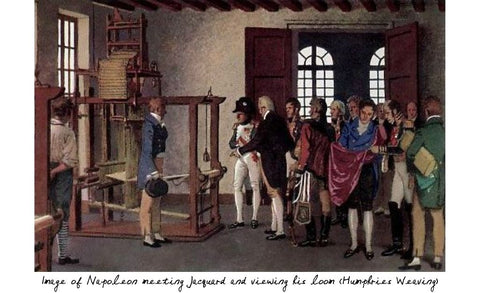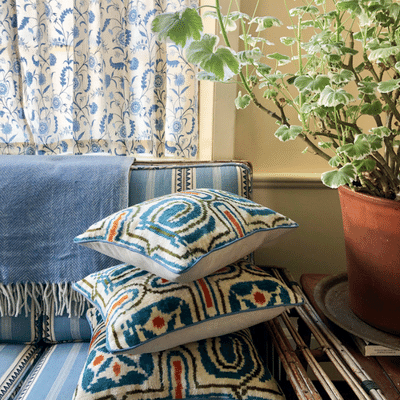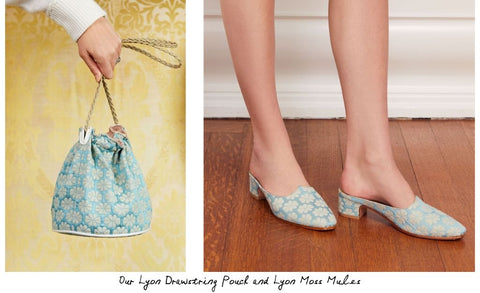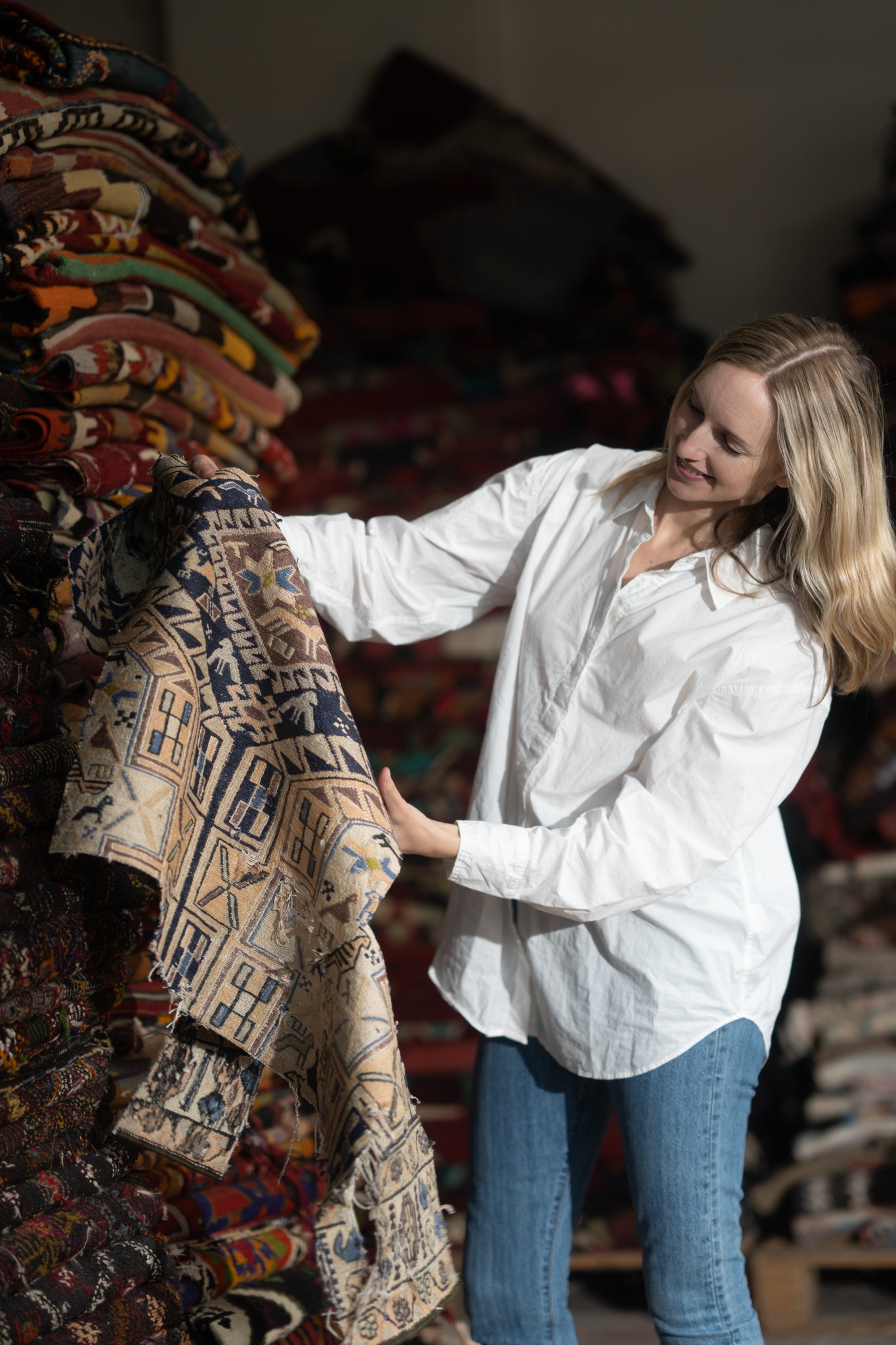All About Jacquard Fabrics
Dear Friends,
A common thread running through everything that we create at Artemis is our passion for worldly textiles, exquisite patterns, and superior quality. This spring, our collection features both French jacquard and Indian block print. In this Journal post, we’ll cover the surprisingly high-tech development of this classic textile.
Read on to learn all about the history of French jacquard.
xx, Milicent

Jacquard is a type of fabric marked by intricate patterns that are woven directly into the textile through the use of a specialized loom. Jacquard patterns are notable for their raised texture (as opposed to a flat, printed fabric) and the complexity of their designs, which often feature large-scale, repeating patterns and multiple colors. Several subcategories of jacquard fabric exist, including damasks and brocades, and floral and landscape patterns are a common feature.
History
As is the case with many beautiful textile innovations, we have the French to thank for jacquard. In particular, an 18th century Frenchman named Joseph Marie Charles, who was known locally by the family nickname “Jacquard.” Jacquard, the son of a master weaver, dabbled in book binding and printing before inheriting his father’s workshop and trade. The inventive Jacquard began tinkering with weaving technology, and in 1804 unveiled a new machine he called the “Jacquard loom” that could automatically weave patterns into silk, automating what would otherwise have been a painstakingly slow process that required two manual laborers.
After working out some mechanical hiccups, the Jacquard loom became a great success and attracted the attention of Napoleon, who viewed a demonstration of the Jacquard loom with the Empress Josephine in 1805. Afterward, the Emperor encouraged its use by the rest of the French silk-weaving industry.

Process
Looms operate by weaving together lateral threads called the “warp” with longitudinal threads called “the weft.” In the weaving process, the loom alternates between raising and lowering threads of the warp so that threads of the weft can be woven through them. What set the Jacquard loom apart was its brilliant use of punch cards to “program” the loom. The holes in these punch cards instructed the looms to raise different—not merely alternate—threads of the warp, so that weft threads in different colors could be used to create texture and pattern.
If that’s a bit much to wrap your head around, consider how player pianos create music by being fed punched-out paper rolls that “tell” the piano which keys to push: early Jacquard looms functioned in much the same way. And if you think this sounds similar to those early, room-sized IBM computers, you aren’t far from the mark. While Jacquard the man passed away in 1834, he’s considered a forefather of modern computing thanks to his innovations in programming machinery.

Modern Uses
Our modern computers no longer require punch cards, and neither do the Jacquard looms of today. In an example of technology coming full circle, contemporary Jacquard looms create their patterns with computer programming.
While jacquard continues to be most readily identified with silk, cotton, linen, wool and polyester materials can all be woven into jacquard fabric. What they share in common are the intricate prints created by jacquard weaving.
Jacquard fabric is used today for clothing like blouses, skirts, and dresses, as well as home goods including bedding, curtains, and furniture upholstery. And now that jacquard fabric is being used to create Artemis shoes, its patterns will have a whole new way to turn heads.
Click here to shop our Lyon Drawstring Pouch and Moss Mules, which feature this beautiful textile.Sources:
https://www.britannica.com/technology/weaving#ref290551
https://en.wikipedia.org/wiki/Joseph_Marie_Jacquard#cite_note-1
https://www.sailrite.com/What-Is-a-Jacquard
https://tissura.com/articles/jacquard-fabrics












